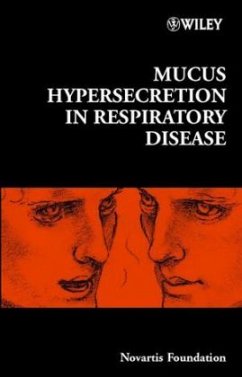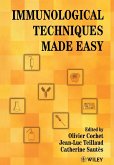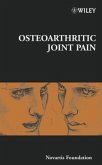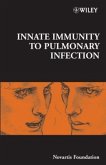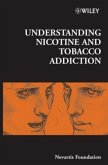A number of chronic respiratory diseases including chronic bronchitis, asthma, cystic fibrosis and bronchiectasis are characterized by mucus hypersecretion. Following damage to the airway epithelium, a repair process of dedifferentiation, regenerative proliferation and redifferentiation takes place that is invariably accompanied by mucus hypersecretion as a key element in the host defence mechanism. In chronic respiratory diseases, however, excessive mucus production leads to a pathological state with increased risk of infection, hospitalization and morbidity. An understanding of the mechanisms that underlie and maintain this hypersecretory phenotype is therefore crucial for the development of rational approaches to therapy.
Despite a high and increasing prevalence and cost to healthcare services and society, mucus hypersecretion in chronic respiratory disease has received little attention until recently, probably because of the difficulties inherent in studying this pathology. Only in the last few years have some of the genes involved in mucus secretion been characterized. The recent availability of genomic sequence information and specific antibodies has led to an explosion of interest in this area making this publication particularly timely.
This book draws together contributions from an international and interdisciplinary group of experts, whose work is focused on both basic and clinical aspects of the problem. Coverage includes epidemiology, airways infection and mucus hypersecretion, the genetics and regulation of mucus production, models of mucus hypersecretion, and the implications of new knowledge for the development of novel therapies.
Chair's Introduction (Basbaum).
Epidemiological studies in mucus hypersecretion (Vestbo).
Post-secretory fate of host defence components in mucus (Salathe et al).
Mechanisms of submucosal gland morphogenesis in the airway (Filali et al).
Mucin-producing elements and inflammatory cells (Jeffery and Zhu).
Respiratory tract mucins: structure and expression patterns (Davies et al).
Development and validation of a lectin-based assay for the quantitation of rat respiratory mucin (Jackson et al).
Regulation of mucin secretion from in vitro cellular models (Davis).
Oscillations of pH inside the secretory granule control the gain of Ca2+ release for signal transduction in goblet cells exocytosis (Chin et al).
A calcium-activated chloride channel blocker inhibits goblet cell metaplasia and mucus overproduction (Zhou et al).
Mechanisms by which Gram-positive bacteria and tobacco smoke stimulate mucin induction through the epidermal growth factor receptor (EGFR) (Basbaum et al).
Non-allergic models of mucous cell metaplasia and mucus hypersecretion in rat nasal and pulmonary airways (Harkema and Wagner).
Cytokine regulation of mucus production in a model of allergic asthma (Cohn et al).
The role of apoptotic regulators in metaplastic mucous cells (Tesfaigzi).
Current and future therapies for airway mucus hypersecretion (Barnes).
Clinical evaluation of new therapies for treatment of mucus hypersecretion in respiratory diseases (Disse).
Final general discussion.
Index of contributors.
Subject index.
Despite a high and increasing prevalence and cost to healthcare services and society, mucus hypersecretion in chronic respiratory disease has received little attention until recently, probably because of the difficulties inherent in studying this pathology. Only in the last few years have some of the genes involved in mucus secretion been characterized. The recent availability of genomic sequence information and specific antibodies has led to an explosion of interest in this area making this publication particularly timely.
This book draws together contributions from an international and interdisciplinary group of experts, whose work is focused on both basic and clinical aspects of the problem. Coverage includes epidemiology, airways infection and mucus hypersecretion, the genetics and regulation of mucus production, models of mucus hypersecretion, and the implications of new knowledge for the development of novel therapies.
Chair's Introduction (Basbaum).
Epidemiological studies in mucus hypersecretion (Vestbo).
Post-secretory fate of host defence components in mucus (Salathe et al).
Mechanisms of submucosal gland morphogenesis in the airway (Filali et al).
Mucin-producing elements and inflammatory cells (Jeffery and Zhu).
Respiratory tract mucins: structure and expression patterns (Davies et al).
Development and validation of a lectin-based assay for the quantitation of rat respiratory mucin (Jackson et al).
Regulation of mucin secretion from in vitro cellular models (Davis).
Oscillations of pH inside the secretory granule control the gain of Ca2+ release for signal transduction in goblet cells exocytosis (Chin et al).
A calcium-activated chloride channel blocker inhibits goblet cell metaplasia and mucus overproduction (Zhou et al).
Mechanisms by which Gram-positive bacteria and tobacco smoke stimulate mucin induction through the epidermal growth factor receptor (EGFR) (Basbaum et al).
Non-allergic models of mucous cell metaplasia and mucus hypersecretion in rat nasal and pulmonary airways (Harkema and Wagner).
Cytokine regulation of mucus production in a model of allergic asthma (Cohn et al).
The role of apoptotic regulators in metaplastic mucous cells (Tesfaigzi).
Current and future therapies for airway mucus hypersecretion (Barnes).
Clinical evaluation of new therapies for treatment of mucus hypersecretion in respiratory diseases (Disse).
Final general discussion.
Index of contributors.
Subject index.

